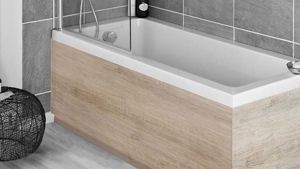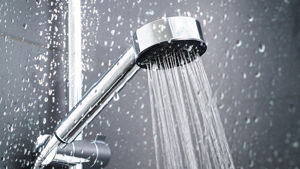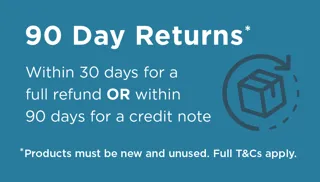Putting electronics inside a foggy room of moisture - what on earth could go wrong?
It is the IP ratings which tell you exactly which bathroom zone you should place your desired electronics in, as there are bathroom regulations/guidelines that you should follow.
Understanding Electrical IP Ratings

Any electrical equipment used in bathrooms i.e mirrors and ventilation, must have a satisfactory level of Ingress Protection (mechanical and moisture protection) against factors such as condensation, humidity, steam, drops of water or sprays from showers.
Ingress Protection, or IP rating numbers, indicate the level of protection needed. IP is followed by two numbers which define the degree of protection. The first number represents the extent to which the equipment is protected against foreign particles or to which people are protected from enclosed hazards. The second number signals the extent of protection against water.
Equipment with no IP rating must not be used in Zones 0, 1 or 2, or in any other wet or damp location.
First Index Rating Number
0- No special protection
1 - Hand/Fist and large foreign bodies
2 - Finger or a medium sized foreign body
3 - Tools, wires and small foreign bodies with a thickness/diameter of anything greater than 2.5mm
4 - Tools, wires and granular foreign bodies with a thickness/diameter of anything greater than 1mm
5 - Complete protection with dust deposits permitted
6 - Complete protection and completely dust proof
Second Index Rating Number
0 - No special protection
1 - Dripping water such as condensation or rain
2 - Water sprayed at an angle such as a light rain being blown by wind
3 - Water spray as if there is a heavy rainstorm
4 - Water coming from all directions as is common with splashing
5 - Low pressure water jets that are coming from all directions, such as being hosed down (residential)
6 - High pressure water jets coming from all directions, such as being hosed down (commercial)
7 - Temporary immersion into water
8 - Permanent immersion under pressure
Understanding Zones in Bathrooms

Bathroom zones are special electrical zones, safe for electrical installations as set out by IEE Wiring Regulations. In the bathroom there is an increased risk of electric shock, due to the proximity of water, so here is an easy to understand guide to everything you need to know about bathroom zones.
Zone 0
Any fittings inside the bath or shower itself (Bathroom Zone 0) must be of a low voltage. A minimum of an IPX7 rating is needed in order to be protected against water immersion.
Zone 1
Fittings in Bathroom Zone 1 directly above the bath or shower, should be installed at a height of 2.25m above the floor. Products should have a minimum IP44 rating or higher and if the fitting is 240v, a 30ma RCD (Residual Current Device) must be used to protect the circuit.
RCD - A life saving device that is expertly designed to prevent you from getting a fatal electric shock if you touch something that is live (bare wire). They offer you protection that ordinary fuses and circuit breakers cannot.
Zone 2
Bathroom zone 2 coverers a large surface. This area runs from above the bathtub or shower tray and above bathroom zone 1 around the wash basin. This area is also within a 60cm radius of any tap, stretching 0.6m outside the perimeter of the bath and at least 2.25m from the floor. Lighting installed in this area should have at least an IP44 rating.
Outside Zones
Anything outside of Bathroom Zones 0,1 & 2 need no special requirements, unless for example water jets are to be used for cleaning purposes. Portable devices must be plugged in outside of the bathroom with the socket far enough away to ensure the appliance cannot be used inside of zone 2. Any space under the bath is considered out of scope, as long as it cannot be accessed without using tools such as a screwdriver.
Shaver Sockets
Shaver sockets are becoming a common feature in bathrooms, whether they are directly installed into the wall, or they come as a feature in a mirrored cabinet.
In relation to bathroom zones, shaver socket regulations state that one must be placed at least 3m horizontally from the boundary of zone 1.
PELV and SELV
Electrical products may also be identified as:
PELV — Protective Extra–Low Voltage, low voltage but connected to earth
SELV — Separated Extra–Low Voltage, low voltage but with output isolated from the input
Bathroom Fans
If you're in need of a swanky new bathroom fan, why not take a peek at some of our best sellers below? There's no harm in being safe and stylish!
We hope you found this guide useful in helping you understand IP ratings and bathroom zones. If you have any feedback or questions, please comment on this article or our Facebook page and we’ll get back to you ASAP. If you'd like to speak to one of our staff, please contact our team via live chat or email and we'll be happy to help.








